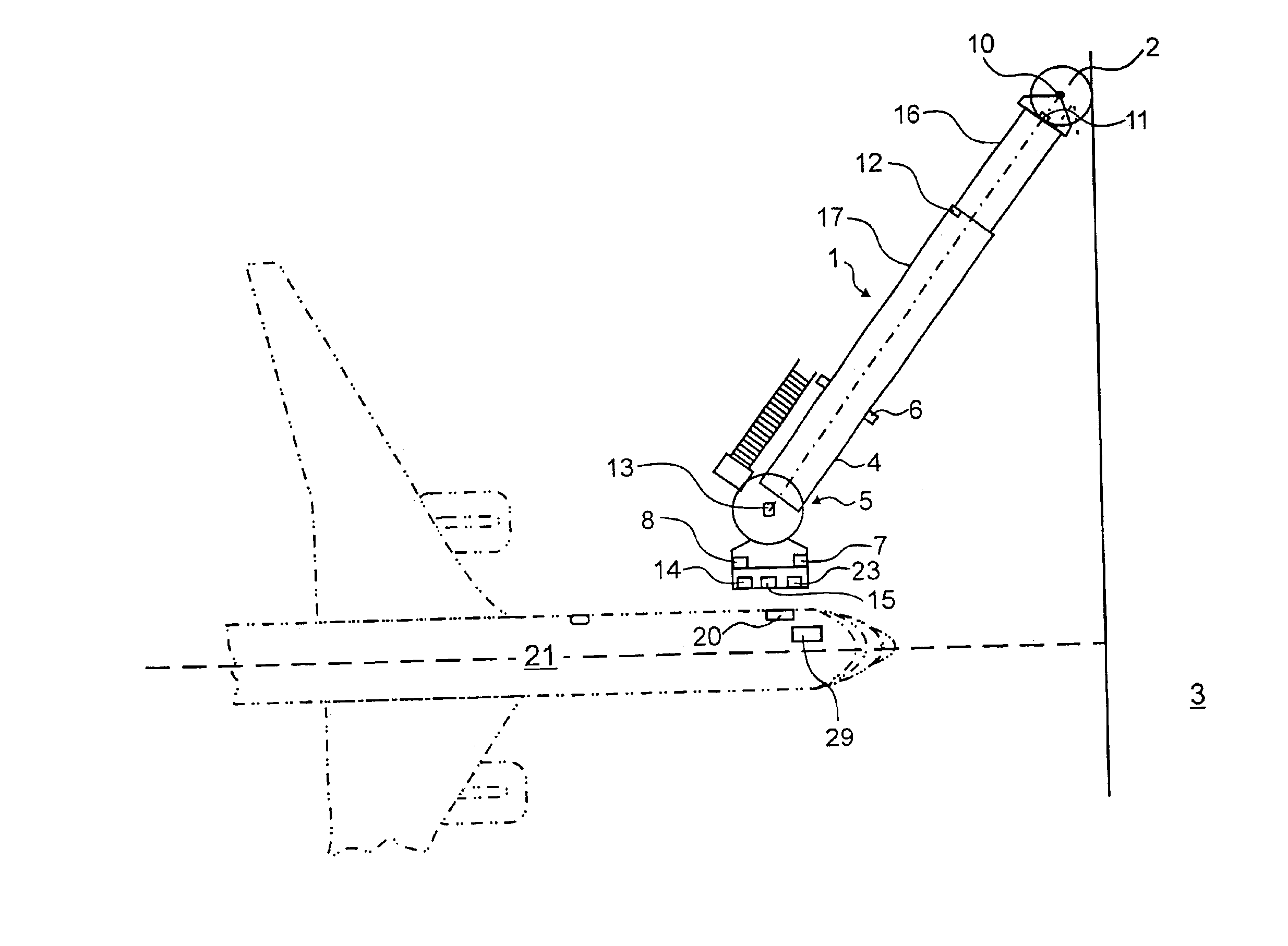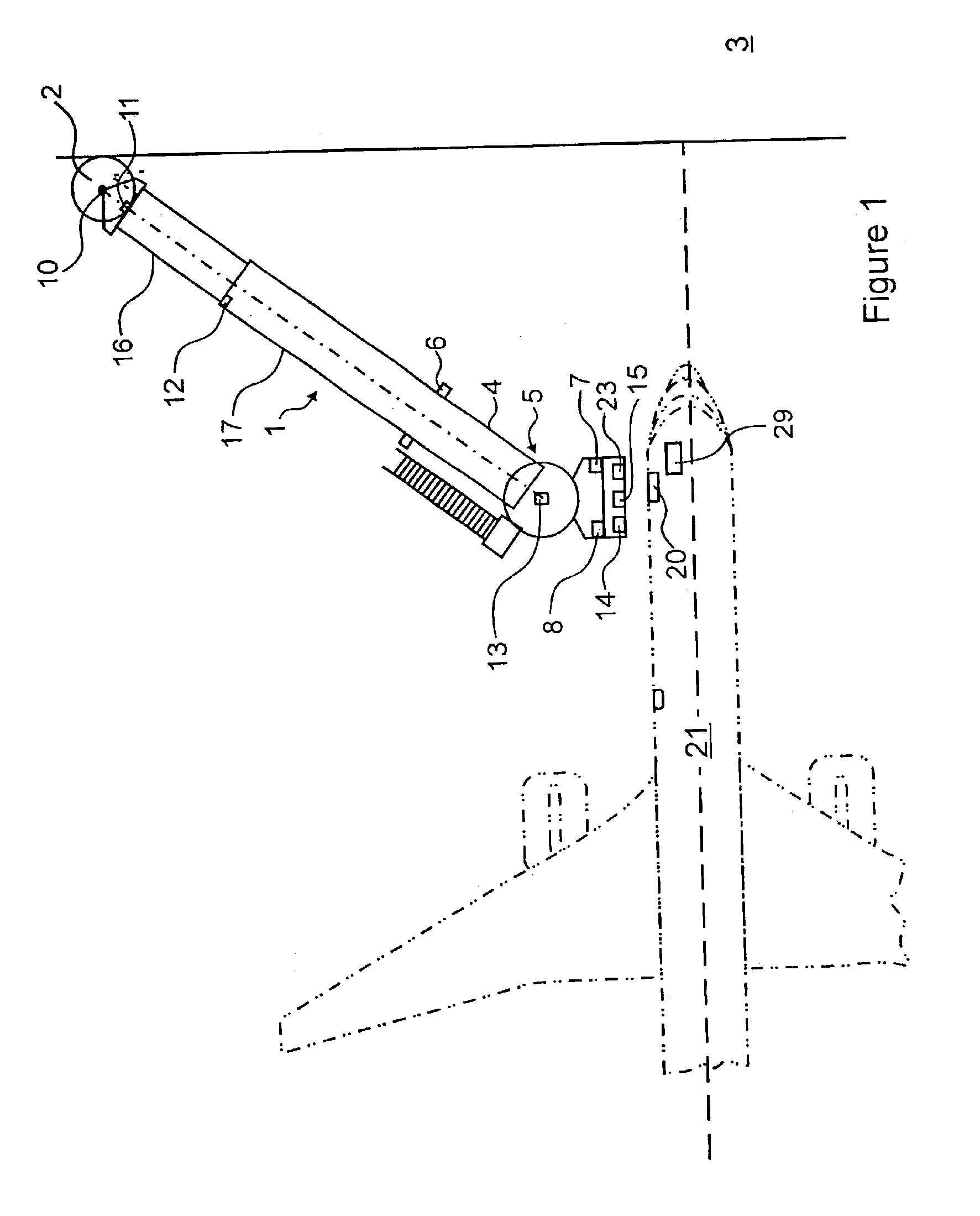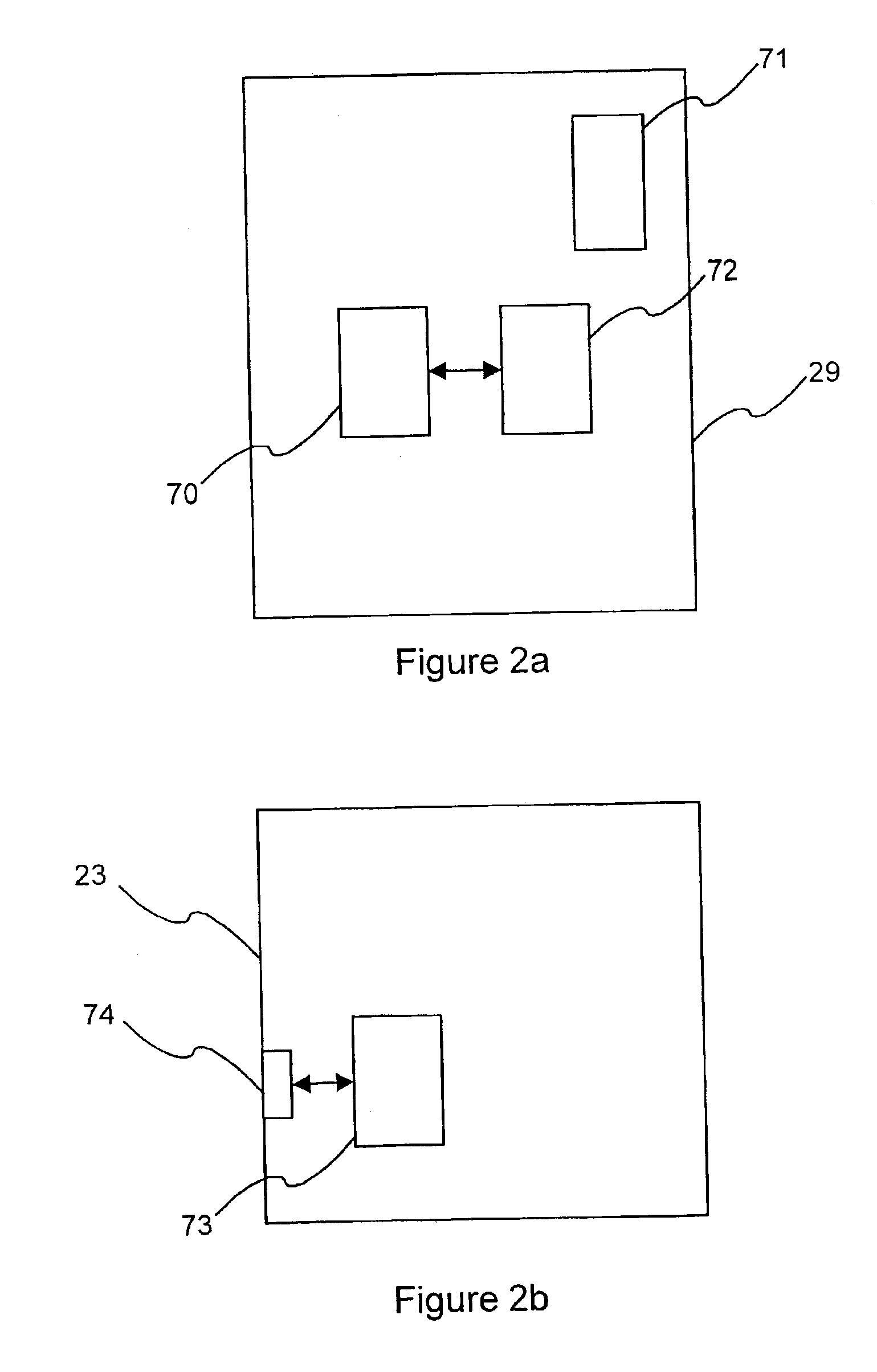Beacon docking system with visual guidance display
a technology of visual guidance and beam docking system, which is applied in the direction of bridges, ground installations, constructions, etc., can solve the problems of time-consuming image processing, slow movement based thereon, and inconvenience for passengers waiting on board the aircra
- Summary
- Abstract
- Description
- Claims
- Application Information
AI Technical Summary
Problems solved by technology
Method used
Image
Examples
first embodiment
[0061]Referring to FIG. 1, shown is a system according to the instant invention. An aircraft 21 having a doorway 20 is equipped with a transmitter unit 29 for transmitting one of an optical signal and a radio frequency (rf) signal. Preferably, the transmitter unit 29 is disposed within a window (not shown) of the doorway 20 to which a passenger boarding bridge 1 is to be connected.
[0062]Also illustrated in FIG. 1 is the passenger boarding bridge 1, for instance an apron drive bridge including a rotunda 2 that is connected to a terminal building 3 and from which extends a passageway 4. The passageway 4 ends with a pivotable cabin 5 and includes inner passageway element 16 and outer passageway element 17, wherein the inner passageway element 16 is telescopically received within the outer passageway element 17 such that the length of the passageway 4 is variable. Each passageway element 16,17 includes a left sidewall, a right sidewall, a floor member and a ceiling member. Optionally, a...
second embodiment
[0073]Referring to FIG. 3, shown is a system according to the instant invention. Elements labeled with the same numerals have the same function as those illustrated in FIG. 1. An aircraft 21 having a doorway 20 is equipped with a transmitter unit 39 for transmitting one of an optical signal and a radio frequency (rf) signal. Preferably, the transmitter unit 39 is disposed within a window (not shown) of the doorway 20 to which a passenger boarding bridge 1 is to be connected. The passenger boarding bridge 1 includes a receiver unit 33 fixedly mounted near the cabin end of the passenger boarding bridge 1, for receiving the one of an optical signal and a radio frequency (rf) signal emitted by transmitter unit 39 of the aircraft 21. The signal is emitted by the transmitter unit 39 of the aircraft 21 to “call” for the passenger boarding bridge 1 when the aircraft 21 is parked at the gate area adjacent the passenger boarding bridge 1. Preferably, the signal is also used to guide the cabin...
third embodiment
[0085]Referring now to FIG. 7, shown is a system according to the instant invention. Elements labeled with the same numerals have the same function as those illustrated in FIG. 1. Aircraft 21 includes a transceiver 22 for transmitting one of an optical signal and an RF signal and for receiving one of an optical signal and an RF signal. Preferably, the transceiver 22 is disposed within a window (not shown) of the doorway 20 to which a passenger boarding bridge 1 is to be connected. The transceiver 22 is used only during the aircraft docking and passenger boarding bridge alignment operations. Passenger boarding bridge 1 includes a transceiver 24, for receiving the one of an optical signal and an RF signal transmitted from the aircraft 21 and for transmitting the one of an optical signal and an RF signal to be received by the transceiver 22 of aircraft 21. Accordingly, two-way communication occurs between the aircraft 21 and the passenger boarding bridge 1, which permits the implementa...
PUM
 Login to View More
Login to View More Abstract
Description
Claims
Application Information
 Login to View More
Login to View More - R&D
- Intellectual Property
- Life Sciences
- Materials
- Tech Scout
- Unparalleled Data Quality
- Higher Quality Content
- 60% Fewer Hallucinations
Browse by: Latest US Patents, China's latest patents, Technical Efficacy Thesaurus, Application Domain, Technology Topic, Popular Technical Reports.
© 2025 PatSnap. All rights reserved.Legal|Privacy policy|Modern Slavery Act Transparency Statement|Sitemap|About US| Contact US: help@patsnap.com



